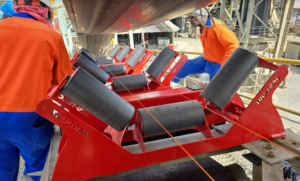In recent years, the industrial sector has witnessed a remarkable transformation with the advent of smart factories. As technological advancements continue to accelerate, these intelligent manufacturing hubs are setting new standards for efficiency, productivity, and innovation. Industrial Edge Magazine delves into the world of smart factories, exploring their impact on the industry and what the future holds for this revolutionary trend.
The Concept of Smart Factories
Smart factories, also known as Industry 4.0 factories, leverage advanced technologies such as the Internet of Things (IoT), artificial intelligence (AI), big data analytics, and robotics to create highly automated and interconnected production environments. Unlike traditional factories, smart factories integrate these technologies to enhance real-time monitoring, predictive maintenance, and seamless communication across all manufacturing processes.
Key Components of Smart Factories
- IoT and Connectivity: IoT devices and sensors are the backbone of smart factories, enabling machines and systems to communicate and share data in real-time. This connectivity allows for precise monitoring and control, reducing downtime and optimizing resource usage.
- Artificial Intelligence and Machine Learning: AI and machine learning algorithms analyze vast amounts of data collected from the factory floor. These insights drive predictive maintenance, quality control, and process optimization, ensuring that the factory operates at peak efficiency.
- Robotics and Automation: Autonomous robots and automated systems handle repetitive tasks with unparalleled precision and speed. This not only increases production rates but also reduces the risk of human error and enhances workplace safety.
- Big Data Analytics: The integration of big data analytics allows manufacturers to gain valuable insights into their operations. By analyzing patterns and trends, companies can make informed decisions, streamline processes, and anticipate potential issues before they arise.
Benefits of Smart Factories
The adoption of smart factories offers numerous benefits that are reshaping the industrial landscape:
- Increased Efficiency: Automated systems and real-time monitoring significantly boost production efficiency, reducing waste and minimizing downtime.
- Enhanced Quality Control: AI-driven quality control systems detect defects and anomalies with high accuracy, ensuring that only top-quality products reach the market.
- Cost Savings: Predictive maintenance and optimized resource management lead to substantial cost savings by preventing costly breakdowns and reducing energy consumption.
- Flexibility and Scalability: Smart factories can quickly adapt to changing market demands and production requirements, allowing for greater flexibility and scalability.
- Improved Safety: Automation and robotics handle hazardous tasks, reducing the risk of workplace accidents and ensuring a safer working environment for employees.
Challenges and Future Outlook
While the benefits of smart factories are undeniable, there are challenges to consider. The initial investment in technology and infrastructure can be significant, and there is a need for a skilled workforce capable of managing and maintaining these advanced systems. Additionally, cybersecurity concerns must be addressed to protect sensitive data and ensure the integrity of interconnected systems.
Looking ahead, the future of smart factories is promising. As technology continues to evolve, we can expect even greater advancements in automation, AI, and IoT. The integration of 5G networks will further enhance connectivity and data transfer speeds, enabling real-time decision-making on an unprecedented scale.
Conclusion
Smart factories represent a paradigm shift in the industrial sector, offering unparalleled levels of efficiency, quality, and innovation. As more manufacturers embrace this technology, the potential for growth and advancement is limitless. Industrial Edge Magazine will continue to monitor this exciting trend, providing insights and updates on the latest developments in the world of smart factories.
Stay tuned as we explore the future of manufacturing and the technologies driving this industrial revolution.



















